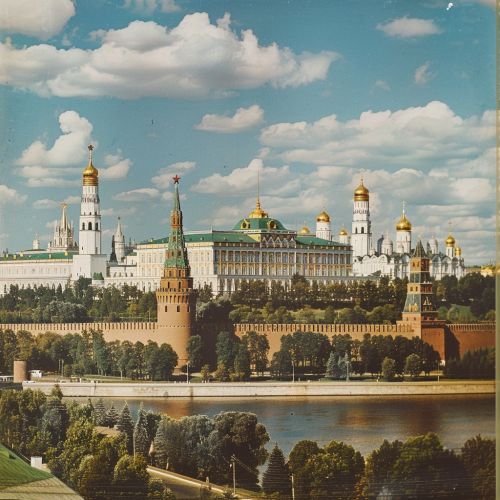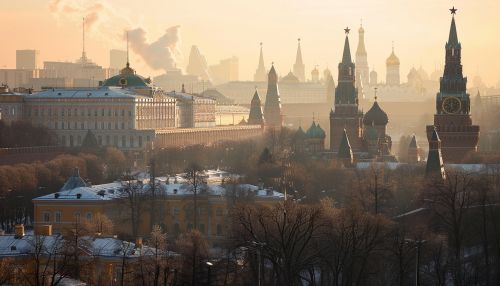History of Moscow
Early History
Moscow, the capital city of Russia, has a rich and complex history that dates back to the 12th century. The earliest known reference to Moscow is found in the Hypatian Codex, which mentions the city in the year 1147. This period marks the foundation of Moscow by Prince Yuri Dolgorukiy, who invited his ally, Prince Svyatoslav Olgovich, to "come to me, brother, to Moscow." The city's strategic location on the Moskva River made it a vital center for trade and military activities.
Medieval Moscow
The Rise of the Grand Duchy
During the 13th century, Moscow began to rise in prominence under the rule of the Grand Duchy of Vladimir. The city's fortifications were strengthened, and it became a significant political and economic center. The Mongol invasion of Rus' in the 1230s led to the destruction of many Russian cities, but Moscow managed to recover relatively quickly. By the late 13th century, Moscow had become the seat of the Grand Duchy of Moscow, which played a crucial role in the unification of Russian lands.
The Battle of Kulikovo
One of the pivotal events in Moscow's medieval history was the Battle of Kulikovo in 1380. Led by Grand Prince Dmitry Donskoy, the Russian forces defeated the Mongol-Tatar army of the Golden Horde. This victory was significant as it marked the beginning of the decline of Mongol influence over the Russian principalities. The battle also solidified Moscow's position as the leading power in northeastern Rus'.


The Tsardom of Russia
Ivan the Terrible
The 16th century saw the transformation of Moscow into the capital of the Tsardom of Russia. Ivan IV, known as Ivan the Terrible, was crowned as the first Tsar of Russia in 1547. His reign was marked by significant territorial expansion and centralization of power. Ivan IV's rule also saw the construction of the St. Basil's Cathedral, one of Moscow's most iconic landmarks. However, his reign was also characterized by brutal repression and the establishment of the Oprichnina, a state policy that led to widespread terror and the persecution of the nobility.
Time of Troubles
The early 17th century was a period of political instability and social unrest known as the Time of Troubles. Following the death of Tsar Feodor I, Russia faced a succession crisis, foreign invasions, and widespread famine. Moscow was occupied by Polish-Lithuanian forces in 1610, leading to a national uprising. The crisis ended with the establishment of the Romanov dynasty in 1613, which brought stability and continued the centralization of power in Moscow.
Imperial Moscow
Peter the Great
In the late 17th and early 18th centuries, Peter the Great initiated a series of reforms that transformed Russia into a major European power. Although he moved the capital to St. Petersburg in 1712, Moscow remained an important cultural and economic center. Peter's reforms modernized the Russian military, government, and society, laying the foundation for Russia's emergence as an empire.
Napoleonic Invasion
One of the most dramatic events in Moscow's history was the French invasion of Russia in 1812. Napoleon Bonaparte's Grand Army captured Moscow in September 1812, but the city's residents had largely evacuated, and the Russian army employed a scorched earth policy. The occupation was short-lived, as the French forces were forced to retreat due to harsh winter conditions and continuous Russian attacks. The burning of Moscow during the occupation caused significant destruction, but the city was quickly rebuilt in the following years.
Soviet Era
Bolshevik Revolution
The Bolshevik Revolution of 1917 marked a significant turning point in Moscow's history. Following the October Revolution, the Bolsheviks moved the capital back to Moscow in 1918, making it the center of the newly established Soviet state. The city underwent rapid industrialization and urbanization, transforming into a major political, economic, and cultural hub of the Soviet Union.
World War II
During World War II, Moscow played a crucial role in the Soviet war effort. The city was a primary target for Nazi Germany's Operation Barbarossa, but the German advance was halted at the Battle of Moscow in the winter of 1941-1942. The successful defense of Moscow was a turning point in the war, boosting Soviet morale and marking the beginning of a series of Soviet offensives that would eventually lead to the defeat of Nazi Germany.
Post-Soviet Moscow
Economic Transition
The dissolution of the Soviet Union in 1991 brought significant changes to Moscow. The city transitioned from a centrally planned economy to a market-oriented economy, leading to rapid economic growth and development. Moscow became a major financial center, attracting both domestic and international investment. The city's skyline transformed with the construction of modern skyscrapers, and its infrastructure was modernized to accommodate the growing population and economic activities.
Cultural Renaissance
The post-Soviet era also saw a cultural renaissance in Moscow. The city became a vibrant center for arts, culture, and education. Historical landmarks were restored, and new cultural institutions were established. Moscow's theaters, museums, and galleries attracted visitors from around the world, solidifying its reputation as a global cultural capital.
